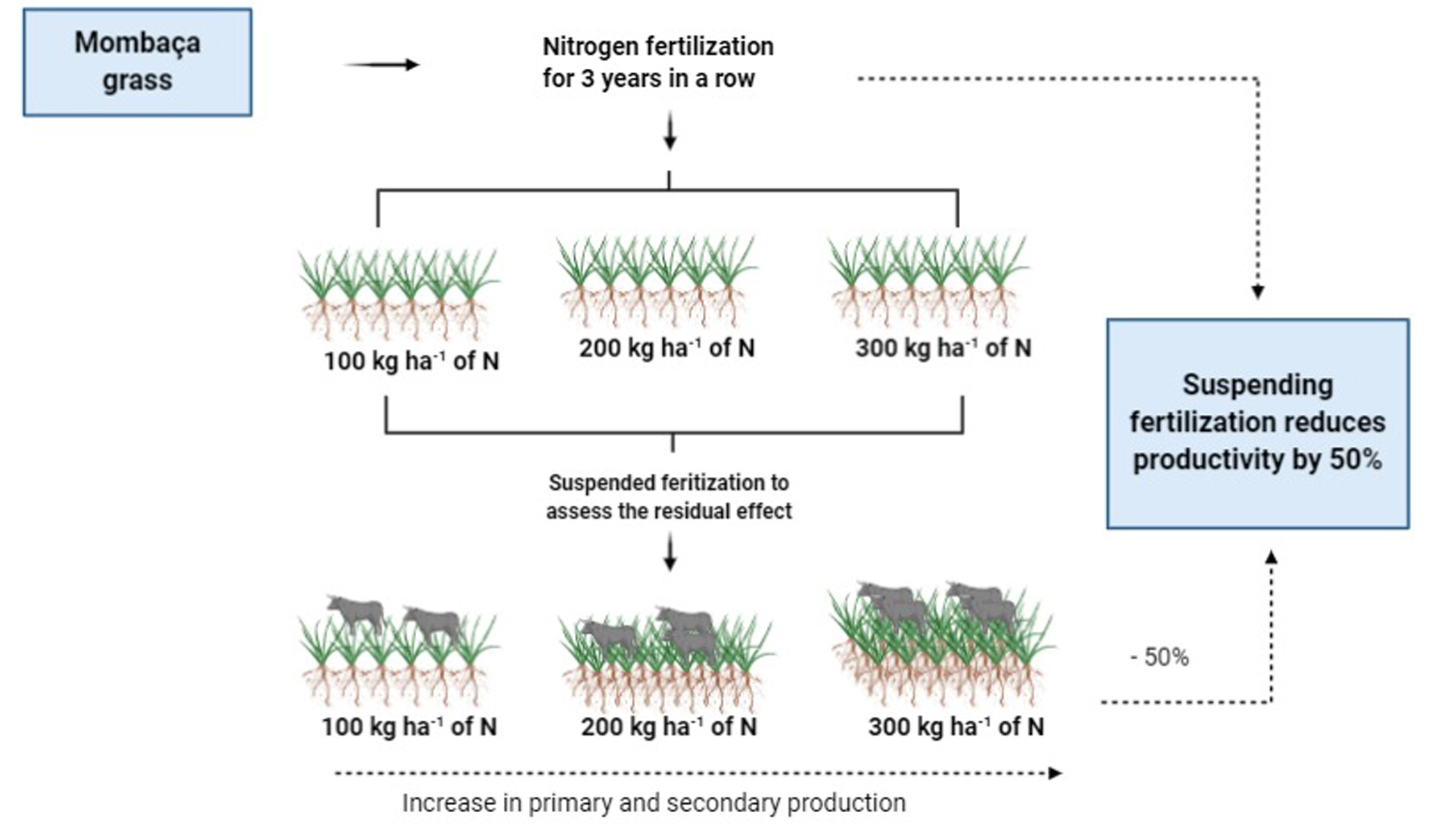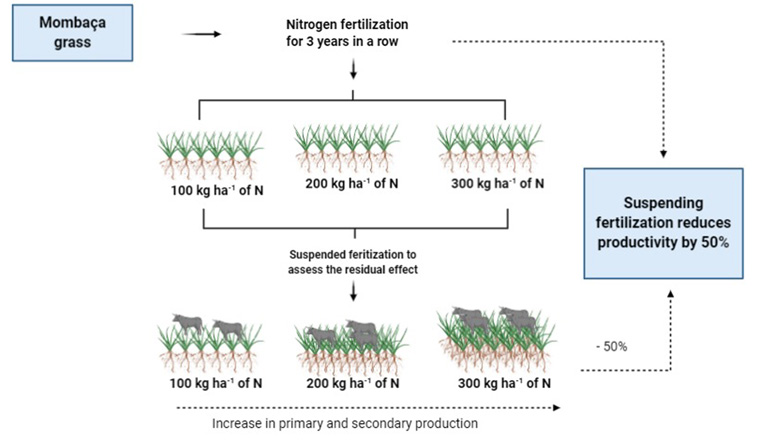The effect of residual nitrogen fertilization on the yield components, forage quality, and performance of beef cattle fed on Mombaça grass
DOI:
https://doi.org/10.48162/rev.39.029Keywords:
pasture fertilization, forage accumulation, Panicum maximum, stocking rateAbstract

The objective of this study was to evaluate the effect of residual nitrogen (N) on pastures of Mombaça grass and its impact on pasture structure and the nutritive value and performance of beef cattle. The experiment analyzed randomized blocks subdivided into plots, with three replications. The research focused on a number of pastures having received three annual doses of N (100, 200 and 300 kg ha-1) from 2015 to 2017, with no N fertilization in 2018. The results indicated that pastures under residual effect of 300 kg ha-1 of N were characterized by higher (P<0.05) rates of forage accumulation than those under the residual effect of 100 kg ha-1 N. Furthermore, this study indicated no effect (P>0.05) on the pasture nutritive value and average daily gain (0.490 kg day-1). The stocking rate was higher (P<0.05) in pastures under the residual effect of 300 kg ha-1 of N, and lower in those at 100 kg ha-1 of N, while weight gain per area followed the trend observed in the stocking rate. The results thus suggest that the suspension of N fertilization for one year after three years of sequential fertilization was responsible for an immediate loss of 50 and 55% of the productivity of plants and animals, respectively.
Highlights:
- Fundamental nitrogen fertilization to ensure pasture productivity.
- The use of nitrogen fertilization has been limited by cost, due to the extension of the areas involved and the need for frequent applications.
- We suspended nitrogen fertilization for one year after using the same doses of nitrogen for three years in order to evaluate a possible residual effect on plant and animal production.
- Suspending the N fertilization of Mombaça grass for one year after three years of sequential fertilization with the same doses leaves a residual effect on the pasture structure and performance of beef cattle.
- The suspension of nitrogen fertilization reduces the rate of forage accumulation by an average of 50%, causing a 55% reduction in animal productivity.
Downloads

Downloads
Published
How to Cite
Issue
Section
License

This work is licensed under a Creative Commons Attribution-NonCommercial-ShareAlike 3.0 Unported License.
Aquellos autores/as que tengan publicaciones con esta revista, aceptan las Políticas Editoriales.










.jpg)




